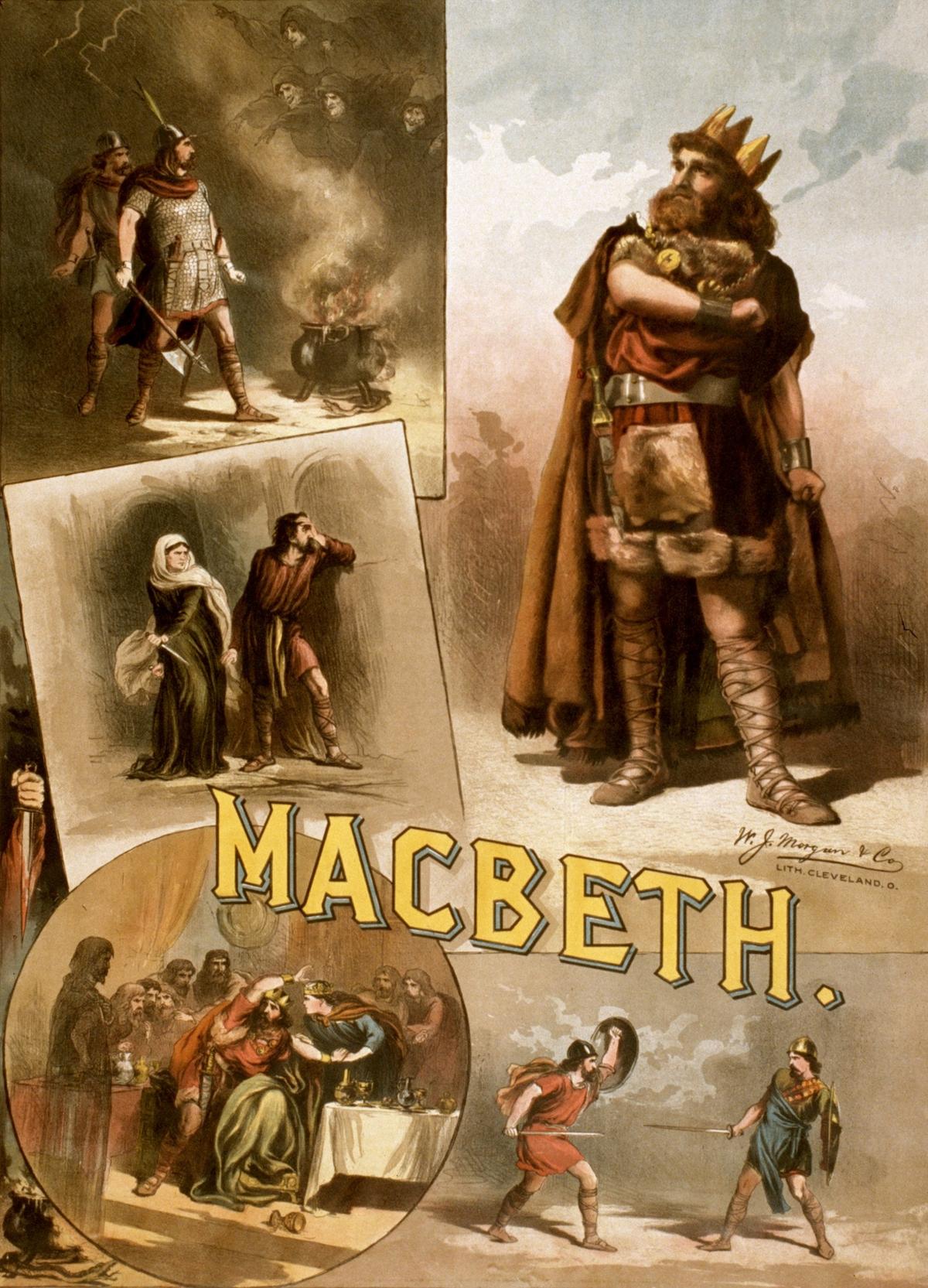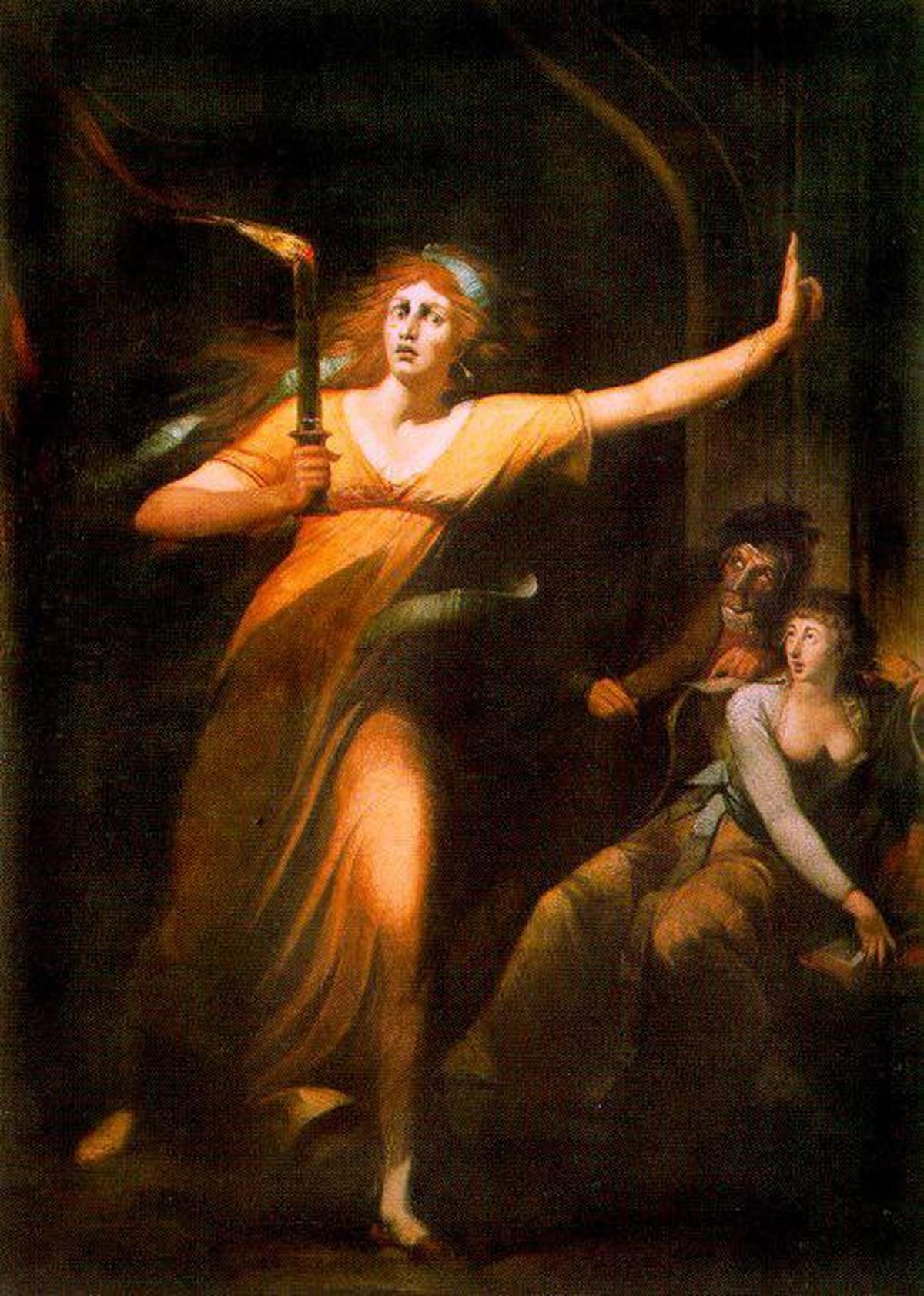Children at Heiderveld Secondary School in South Africa portraying the three witches Macbeth
| Photo credit: AKiba2x0 1/ Wikimedia Commons
When you hear the line “he who must not be named”… what comes to mind? For most of us, this line refers to Voldemort, the heinous villain of J.K. Rowling’s “Harry Potter” series. While Voldemort may have wreaked havoc on Hogwarts and the wizarding world, there’s another name that has been (almost) terrorizing storytellers – or rather, theatergoers and actors alike – for more than four centuries, and that name is… (brace yourselves) Macbeth.
“Why?”
Well, I’m glad you asked.
The legend behind the cursed play

a poster Macbeth’s 1884 production | Photo credit: Wikimedia Commons
Superstition associated with the play dictates that the title of the play or any quotation from the text should not be spoken in the theatre except during rehearsals or performances. Not following this prohibition is seen as inviting trouble, misfortune or even disaster for the rebel or the team putting together the poet’s play.
This legend has been feared for so long that it has become ingrained in the psyche of the English people. One evidence of this is that there is no sign for the word ‘Macbeth’ in British Sign Language.
To avoid any risky situations, theatrical circles have come up with a number of euphemistic terms to refer to the play, such as “The Bard’s Play” or “The Scottish Play.”
The King, the context and the curse
Witch trials and the persecution of suspected witches were very common throughout Europe during the 16th and 17th centuries. When King James I ascended the throne of England in 1603, his disdain for witchcraft was clear. He even called it “high treason against God”, and justified all forms of torture and cruelty against those accused. His obsession with the dark arts is said to have been fueled by the murder of his mother, Mary, Queen of Scots. This obsession grew after he encountered a brutal storm at sea while king of Scotland. Convinced that witches were responsible, James began a witch-hunt upon returning home and quickly wrote an account of the witch-hunt. DemonologyA book outlining his plans for eradicating witchcraft.
When the English playwright William Shakespeare Macbeth Around 1606, it struck fear into the public with three “weird sisters” chanting spells. Rumors spread that a coven of witches had cursed the play. Historians later refuted the story, claiming that the actor playing Lady Macbeth (in the first production of Shakespeare’s tragedy) died suddenly before opening night, revealing it to be a myth created by 19th- and 20th-century cartoonist and critic Max Beerbohm. Yet, by then, the legend had already cemented its place in theatrical lore.
A tainted legacy

“The Sleepwalking Lady Macbeth” by Johann Heinrich Füssli | Photo Credit: The York Project (2002)/Wikimedia Commons
The play has not enjoyed much success since then. Many of its productions have been plagued by accidents, including actors falling off the set, mysterious deaths and even riots, most notably in 1721 and 1772. A particularly horrific incident occurred in a 17th-century Amsterdam production, when the actor playing King Duncan was murdered in front of a live audience, allegedly because a real dagger was used instead of a stage prop during a stabbing scene.
But don’t such accidents happen with other plays too? MacbethIncluding six murder scenes and a raging storm, the film is a risky bet, cursed or not. Its production cost so much that British historian Martin Harrison noted in his 1998 book, The language of theatrethat it could bankrupt a theater.
But it is wise not to take any risk
So if you hear the name ‘Scottish Play’ in the theatre, there is an easy solution. Walk out of the theatre, turn around three times, spit, swear and then knock on the theatre door and ask to come in.